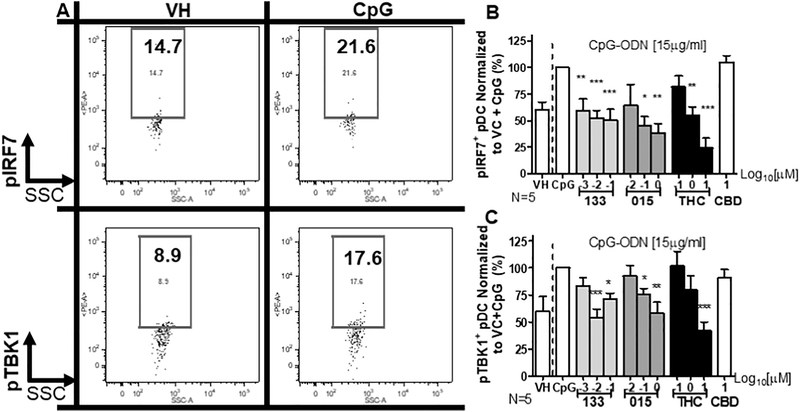Fig. 2.
Treatment with THC, JWH-015, and JWH-133 inhibited the CpG-induced phosphorylation of IRF7 and TBK1 in pDC. Isolated human PBMCs were treated with either Vehicle (VH; 0.03% Ethanol), CBD (10 μM), THC (0.1, 1, or 10 μM), JWH-015 (10−2, 10−1, 100 μM) or JWH-133 at (10−3, 10−2, 10−1 μM) for 30 min, stimulated with CpG-ODN at 15 μg/ml for 5 h and intracellularly stained for pIRF7 or pTBK1 (N = 5 donors). pDC > 90% viability within 5 h of treatment (A) Example of gating for pIRF7 and pTBK1 in the presence of VH, with and without CpG stimulation. (B) CpG induced intracellular expression of pIRF7 was suppressed by THC, JWH-015, and JWH-133. (C) CpG induced intracellular expression of pTBK1 was suppressed by THC, JWH-015, and JWH-133. Asterisks indicate statistically significant differences in IRF7 and TBK1 phosphorylation compared to VC + CpG (*** = P < .001, ** = P < .01, * = P < .05) using a 1-Way ANOVA with Dunnett’s posttest.

